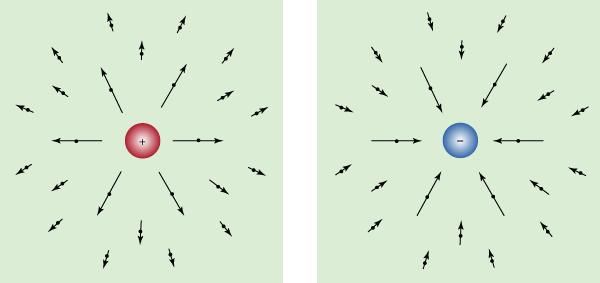Electromagnetism, an intricate branch of physics dealing with electric and magnetic fields, is not merely an academic curiosity; it plays a pivotal role in the vast field of computer science. This seemingly esoteric principle underpins the very fabric of modern computing technologies, from the foundational architecture of processors to the sophisticated mechanisms of data transmission. What if, for a moment, we pondered the terminals of our advanced digital world—how much of it is grounded in the principles of electromagnetism? This reflection leads us to explore how deeply intertwined these two disciplines are and poses the challenge of recognizing these connections in our daily tech experiences.
The intersection of electromagnetism and computer science can be observed through various lenses, including hardware, software, data manipulation, and telecommunications. Each of these facets reveals the profound impact of electromagnetic principles on technological advancement.
1. Electromagnetic Theory and Computer Hardware
At the fundamental level, understanding the role of electromagnetism in computer hardware is essential. Conductors, semiconductors, and insulators—the materials that form the basis of computer systems—are influenced by electromagnetic interactions. For example, the operation of transistors, the building blocks of microprocessors, relies heavily on electric fields for their functionality. Transistors modulate current through channels created by applying varying voltages, which are manifestations of electric fields. This principle is rooted in the laws of electromagnetism and sets the stage for digital computing.
Moreover, the communication among hardware components is contingent upon electromagnetic signals. Buses, which transfer data between the CPU, memory, and peripheral devices, utilize electrical signals for rapid information exchange. Higher frequencies in these signals can enhance performance, a principle rooted in the interplay of electromagnetic waves and electronic communications.
2. Data Storage and Electromagnetic Phenomena
Moving beyond mere processing, the methodologies employed for data storage heavily employ electromagnetic principles. Hard disk drives (HDDs) utilize magnetic fields to store information on rotating platters coated with magnetic materials. Bytes of data are represented as magnetized zones—flux reversals and non-reversals that encode binary information. This interaction exemplifies how electromagnetic principles are harnessed for practicality within computer systems.
Furthermore, advancements in solid-state drives (SSDs) employ flash memory technology that, while primarily based on semiconductor physics, also indirectly use electromagnetic properties to improve read and write speeds. The quantum mechanical phenomena involved in charge trapping and the control of electric fields enhances the efficacy of these devices as well.
3. Telecommunications and Signal Processing
When delving into telecommunications, electromagnetism reveals itself as a cornerstone of data transmission methods. Wireless communications, including Wi-Fi, Bluetooth, and cellular networks, depend on the propagation of electromagnetic waves to transmit data through the ether. Each of these technologies employs radio frequencies (RF) governed by Maxwell’s equations to facilitate communication over varying distances.
Signal processing techniques often rely on modulation and demodulation of these electromagnetic waves to encode information effectively. Techniques such as amplitude modulation (AM) and frequency modulation (FM) make use of these electromagnetic principles to ensure that messages can be transmitted clearly and accurately, posing a compelling interactive challenge in noise management and signal integrity throughout the transmission paths.
4. Robotics and Electromagnetic Sensors
Robeters, which are increasingly finding their way into various sectors—from manufacturing to healthcare—utilize electromagnetic sensors that allow for exquisite levels of precision. These sensors convert physical phenomena into electronic signals, which computational systems can process. Magnetic sensors, including Hall effect sensors, allow machines to detect the position and speed of moving parts, providing critical feedback necessary for autonomous navigation and robotic functionality.
The interplay between the electromagnetic fields generated by these sensors and the computational logic in robotics exemplifies the dual role of electromagnetism: as a facilitator of physical interaction and as an enabler of computational processing.
5. Energy Efficiency and Electromagnetism
As computational demands escalate, energy efficiency has become a paramount concern. Electromagnetism plays a crucial role in the engineering of energy-saving components, where efficiency must balance the demands of processing speed and thermal output. Techniques such as dynamic voltage and frequency scaling (DVFS) utilize electromagnetic principles to optimize performance without excessive power expenditure.
The challenge lies not only in applying these principles but also in innovating new materials and methods to push the boundaries of what is currently achievable in energy efficiency. Scientists and engineers are continuously working to harness electromagnetism to meet the rigorous standards of sustainability within the tech industry.
Conclusion
In conclusion, the role of electromagnetism in computer science is both foundational and multifaceted. Its influence extends from core hardware components to the methods of data storage, telecommunications, and beyond. As we further dissect the intricate complexities of computer technologies, one cannot help but pose a playful question: can one fully appreciate the computational wonders without a profound reverence for the electromagnetic forces interwoven into their very fabric? The challenge that remains is navigating these principles to revolutionize future technologies, harnessing the omnipresent forces of electromagnetism to secure our digital futures.










